Rony Abovitz, CEO of Magic Leap, still has to build a big base of augmented reality glasses users and the Magicverse platform that will create our shared reality in the future. But he wants to deliberately create an ethical foundation for the technology, which he calls an “emergent system of systems.”
In an exclusive interview with VentureBeat, Abovitz said his company is working with partners to build the Magicverse, which will be accessed via Magic Leap’s Magic Leap One AR glasses.
The Magicverse is Abovitz’s vision for a positive version of the Matrix, the Metaverse, the Oasis, and many other science fiction utopias and dystopias that depict the future of cyberspace. Abovitz said his company’s partnerships with AT&T, the University of Miami, and another partner being announced this week at the Mobile World Congress event in Barcelona represent a multi-company, years-long, cross-platform effort to build places in the physical and digital worlds that take advantage of Magic Leap’s spatial computing technology. Magic Leap‘s partners, Abovitz said, will make the Magicverse into a reality.
At the Mobile World Congress event, rival Microsoft launched its HoloLens 2 mixed reality headset while SK Telecom announced it would distribute Magic Leap’s headset in South Korea. CNN also launched its news app for Magic Leap.
And on Thursday, Magic Leap announced 31 winners of its first grants for the Magic Leap Independent Creator Program, which is aimed at jump-starting indie development on Magic Leap.
This plan is so ambitious that it makes Magic Leap’s $2.4 billion in funding seem like a small amount of money for the task at hand. We had an interesting conversation about how 5G networks can pave the way for the Magicverse. But other things have to happen too. Like an agreement not to use it for evil deeds.
Already, one ethical test has come up. Microsoft CEO Satya Nadella has defended Microsoft’s $480 million contract to supply AR systems to the U.S. military — a move that some Microsoft employees oppose on ethical grounds. Magic Leap also bid on that contract but did not win it. Abovitz did not comment on that bid.
Here’s an edited transcript of our interview.
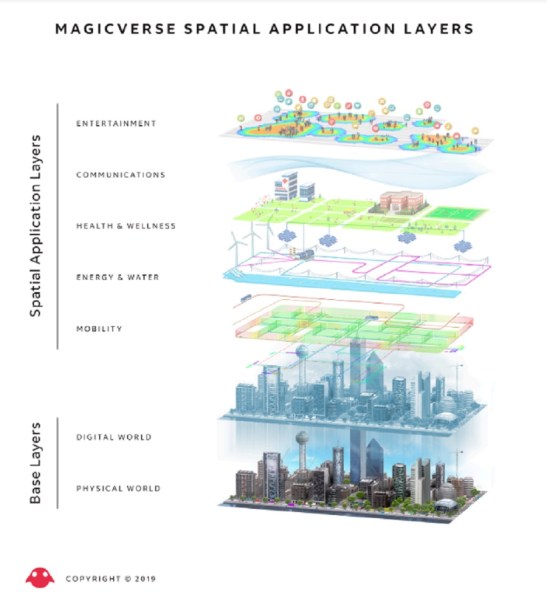
Above: The layers of the Magicverse.
VentureBeat: Can you tell me more about the Magicverse and the intentions behind the blog post coming out now? What’s the reason for doing the blog post now, some of the context for it? What are you trying to get across.
Rony Abovitz: We’ve started to tease the idea last year at our Leap conference and different events throughout 2018 and early this year as well. We announced our first partnership with a university, the University of Miami, which will become the first Magicverse campus in a multi-year project. We also announced AT&T United States, our first major telco relationship, which will be the framework in which to build Magicverse in the U.S. At Mobile World Congress, we’re announcing another significant partner of an AT&T nature that’s joining this Magicverse alliance, which we see as the next internet.
If you’re an archaeologist and you look at civilization layers, you see the current internet and the way things are, the devices — it’s an established layer, almost like sediment. There’s a new thing, a new civilization, that’s going to be built on top of it. We see the 5G partnerships we’re building in the U.S. and around the world — a number will be announced throughout the year, and a significant one will be announced next week, which is one of the triggers for us wanting to state clearly what we’re doing and why, some of the history and thinking behind it.
We’re raising the notions of ethics and boundary requirements, which is not just a technology play. You have to get societal norms correct. We see, looking backward, that some of the current internet companies have gone off the rails. You want to learn from that and establish the right way forward in an open and transparent manner.
Also, a bit about the origin, about where this comes from for Magic Leap. John Gaeta, our head of creative strategies, Richard Taylor, one of our board members, and I were talking about the unfinished project of Walt Disney from the ‘60s, where he envisioned cities that were continuous prototype communities that would be never-ending innovation cycles. You’d live within this blueprint of ever-changing innovation. He died a few months later. Then, they made Epcot, which was not really what he was up to. It’s one of those unfinished thoughts.
If you look at where the world is going, where spatial computing goes, and the … emergence of 5G, there’s an opportunity to almost pick up that thought and modernize it and make it global. Not just make it about function, even though there’s amazing functional everyday work. But there’s also the experiential wonder and magic that’s a big part of what our company is about and infusing that into everyday life.
Some big players will have competing visions that may be highly functional, that may be highly dystopian. We want ours to be one of a more positive view, a more open and transparent decentralized view, where cities and the people in them possess digital information as a natural resource. Not to be exploited but to benefit that particular community. How those communities get connected and have that become an economic amplifier, and in some sense, try to pick up a thought from a great person who — at the time you had the Soviet/U.S. angst about nuclear war. But there was this great utopian push in the ‘60s. Let’s go to the moon. Let’s build all these things. You had people like Disney thinking about building these amazing future cities of tomorrow.
I feel like in this day and age, there’s a sense of darkness and dread. We’re almost in a Nixon era again. We’re fighting with the Russians again, all these things. We want our version and vision of this to build on a thread of a positive view of the future. That has spread throughout not just decades ago, but for thousands of years, there’s been this positive thread of the future. We want our version to be seen as one of those. We want to work hard to build that and pull people together. When we announce those significant partners, people understand what we’re doing and differentiate it.
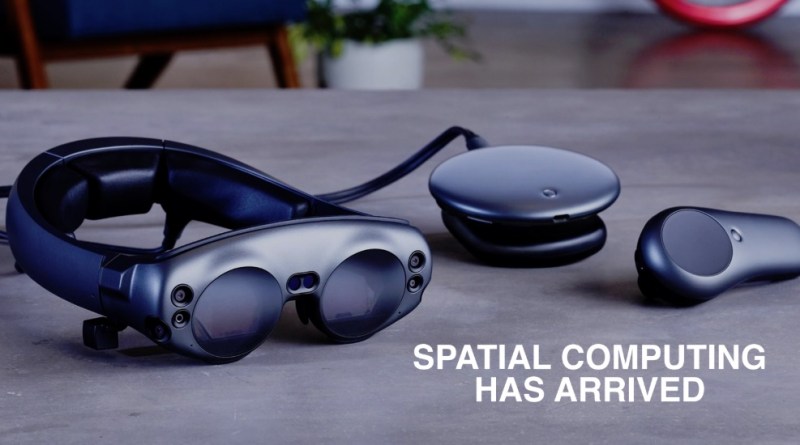
Above: Magic Leap One will make possible “spatial computing.”
The other thing is, Kevin Kelly and others are writing about these generalized abstractions — AR clouds and mirror worlds. There will be a lot of confusing versions of this, almost the way there are democracies and monarchies and different forms of how you govern. Magicverse and these others are complex systems of spatial computing, [IoT or internet of things], governance, city-scale things. We want people to see that it’s not a device. It’s an entire social-technology fusion that’s coming. We want people to know where we’re coming from, where we’re going, what are the roots, and what we want.
Different folks will make decisions about how they participate in these things. It won’t just be liking this operating system or another. What form of social life and governance do I want to be part of? Is it open and decentralized? Do I want to control my data or not? Do I want the ability to add to this thing, or is it just simply monitoring all the time? There are all these fundamental human questions we want to raise early so people can make these decisions and also have help from the community in staying on the right path. It’s not something our company will do all by itself.
VentureBeat: It’s a happier version of the Metaverse or the Matrix, I guess, that we’ve read about it and talked about for decades. But also much more specific?
Abovitz: The Matrix didn’t have a happy ending [laughs]. We have a very practical set of technology enablers that will allow for services and products and interactions to migrate to an environment where it really starts to break the boundaries of time and space and physical structures. It has to have a level of practicality to it. The vision, the ethics around it are extraordinarily important, but the ability for us to actually transform our lives on a daily basis using these technology enablers is incredibly important.
Everyday activities like a doctor’s visit — you’ll be able democratize visiting the best doctor at Harvard. It’s something that, in this format, you could create something that’s available to a lot more people at a fraction of the cost. The idea of a physical worker, being able to co-present yourself, beyond tele-working through the thin internet today — this spatial universe, what we call the Magicverse, you’ll have the ability to wake up in Chicago, port to Mexico City, go to London, go to Berlin in a more full and robust way as a human presence, and then act upon the world through IoT and automation. You’re not just there as a digital entity, which we’re beginning to showcase through our system with co-presence. You’ll be able to act on the world and do things and really be present and have action with these abilities.
People who migrate from place to place to work, they’ll be able to send their talents all over. That changes economic distribution. It raises the idea that the 5G-connected cities in different countries, as they connect throughout the world, will change the global economy. It’ll change the workforce, change the economic distribution. Some of that can be incredibly positive if it’s channeled correctly. But we also want to raise the fact that to do this well, you need all the players, all the actors which are well beyond us — government regulation, the giant telco infrastructures — to be in a mode of doing this for the right purpose.
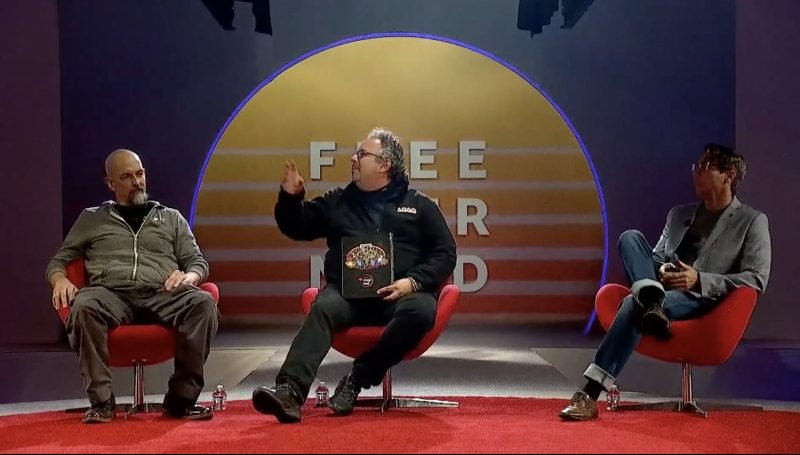
Above: Magic Leap’s CEO Rony Abovitz, John Gaeta, Magic Leap’s head of creative strategy, and Neal Stephenson, Magic Leap’s chief futurist on stage at L.E.A.P. on October 10, 2018.
VentureBeat: From my conversation with HP’s CTO today, they were talking about their megatrends that they expect to unfold over decades. One of the assumptions was that there would be growing inequality as things like the development of mega-cities happen. You’ll have so many cities over 25 million people. In some ways, it felt like technology could be used to address that, but the way the world is going, it’s almost an unstoppable force, a trend that you can see coming for decades, this growing inequality.
Abovitz: There are people who identify those issues, like how AI will overpower us, as trends there’s no solution for. We’re more practical. You can actually solve these problems. You could will collective force to say that we can solve those economic problems and break them down. Our goal is to use these systems to normalize economic distributions, to amplify people’s capabilities to make health care much more available, make economic opportunity much more available, and distribute that more fairly based on people’s merits. You give a lot more people access.
If you bring a positive view to it and work to solve those problems in a collective way with the right partners, you can turn these things upside down. You’re really nailing why we’re bringing this up now, right in front of Mobile World. We’ll continue to do it because you’ll have these different voices, dystopia and utopia. Are there problems we can’t solve or problems we can solve? We believe you can solve these things. We call that technology in the service of humanity.
VentureBeat: This sounds awfully complicated. Have you been at this for some number years, trying to pull this together? How many companies have to be involved?
Abovitz: A number. Our supply chain and our partnership chain is immensely large. We’re announcing some of the largest ones. When you’re doing what we’re doing and you raise the capital we’re raising, it’s not only about a single device. It’s about building a whole ecology and community around the new form of computing and how that integrates into society.
A great example is the AT&T partnership. It’s the first of many, but the ubiquity of high bandwidth, low latency 5G networks is a huge enabler to this vision. It accelerates it. It’s complicated. It’s hundreds of billions of dollars of investment to build the infrastructure globally, but it’s one of many partnerships that enable Magicverse to come to life.
Some want to go colonize Mars. That’s their vision of where the future goes. Those are cool technology ambitions. What we see as our vision and goal for establishing Magicverse across the United States and the globe is our version of a big moon shot. But here on earth, and a lot more empowering and enabling people in the near term and the long term. You don’t assume we have to exit the planet in order to do things. Let’s fix what we have right now.
The experiences you can have collectively will probably exceed anything we can do, even if we travel the entire universe. This allows the creative collective universe to be explored. I call that inner space. That’s a very powerful force. There are good ways to connect people through that. The underlying drive is there is a new internet forming, a spatial internet on top of 5G. Our version of that, what we call Magicverse, is a particular, hopefully socially good, more positive form. We think it’s going to be an incredibly strong force in economic and computing development over the next 10 and 20 years, with things that are not so far away. 2019, 2020, 2021, you’ll see major activity in 5G and the things we’re doing.
The interesting thing is, hundreds of billions of dollars are already being spent building that new infrastructure by the telco companies and governments. Probably close to a trillion dollars if you include China.
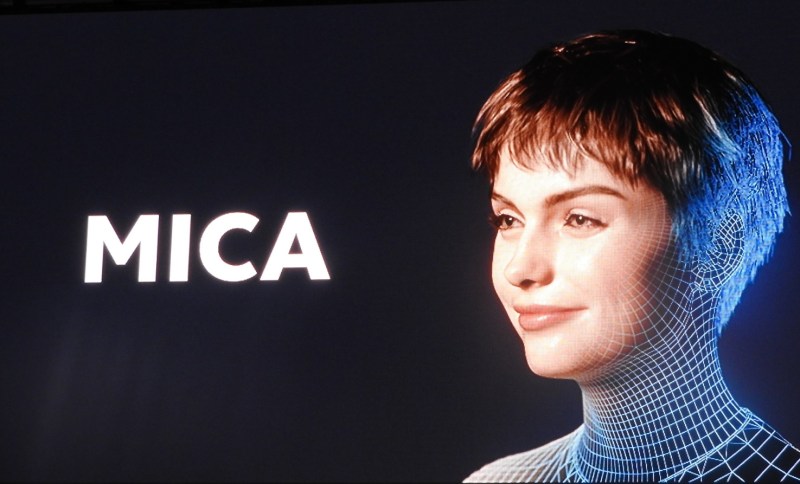
Above: Mica is a digital human demo for the Magic Leap One.
VentureBeat: I was going to mention, the nice thing for you is they’re building 5G anyway without this in mind. They’re building it to give us better phone service, so we can read our email wherever we want. What you’re getting is the infrastructure for the Magicverse.
Abovitz: I’d say that I’m not a really good surfer at all, but I love big wave surfing, even if I can’t do it. There’s a really big wave coming, built by some others. We have a cool surfboard that we’re using to jump on.
I would ask the question, do you really need 5G for your phone or tablet or television? You really don’t. It’s being built for something else. All the players building those things are anticipating that something else. They envision some future. They’ve been talking to companies like ours, and they see that future coming. It will support the legacy products, but it’s really being built for what’s next, what the next 10 or 20 years are about.
You hear about things like fully instrumented smart cities that enable autonomous driving and spatial computing. Those are the types of use cases that the 5G networks are being deployed to enable. When 4G was built, it supported your standard cell phone, but it really allowed the flourishing of video streaming and communication on the advanced phones we have today. We’re very lucky to have the foresight of major infrastructure players and government plowing the way forward.
The timing of all this coming together, the timing of the power of AI, sensors, and this kind of spatial computing — it’s really different from what people think of as — say, forms of VR where I’m by myself in a room in my house. This is a collective, large economic scale thing sitting on top of infrastructures. It will be built inside and outside. It’s an interesting moment in time that we live in. Part of our goal is to raise the awareness for developers and everyday people that there’s something really cool coming. You can be part of shaping that to be a good thing.
The future we’re trying to enable — we’re trying to work under the hood. There’s an immense amount of work under the hood, platform work. Things as simple as enabling multi-person co-presence, there are transmodal interfaces that include a combination of voice, gesture, and gaze that allows for natural human interfaces. You’re eliminating points of friction in how people want to interact with these new digital environments and experiences and services. That’s a lot of investment that we’ve put in from a platform perspective. Magic Leap is helping enable that through partnerships with creators, developers, telcos, all types of companies to bring Magicverse to life.
VentureBeat: Do you need this directed in a particular direction for spatial computing to take off? Or are they essentially building something that you can use already, the same way they’ve building a way for a million people to watch Stranger Things at the same time?
Abovitz: We’re definitely leveraging what’s being built by major companies and governments around the world. But by partnering deeply with them, having a key player partner in different countries, including here, we’re able to go deep and tune the services and capabilities, whether it’s data or IoT connectivity — how do you actually localize? All sorts of interesting problems for which, by working closely together, we’re able to optimize spatial computing.
That’s why it’s important that it’s a partnership-based approach, versus acting at arm’s length. These deep partnerships will enable fine-tuning for spatial computing to flourish and shine in these environments. That’s why we’ve decided to go deep on an engineering and technology level as well as a marketing and distribution and awareness level.
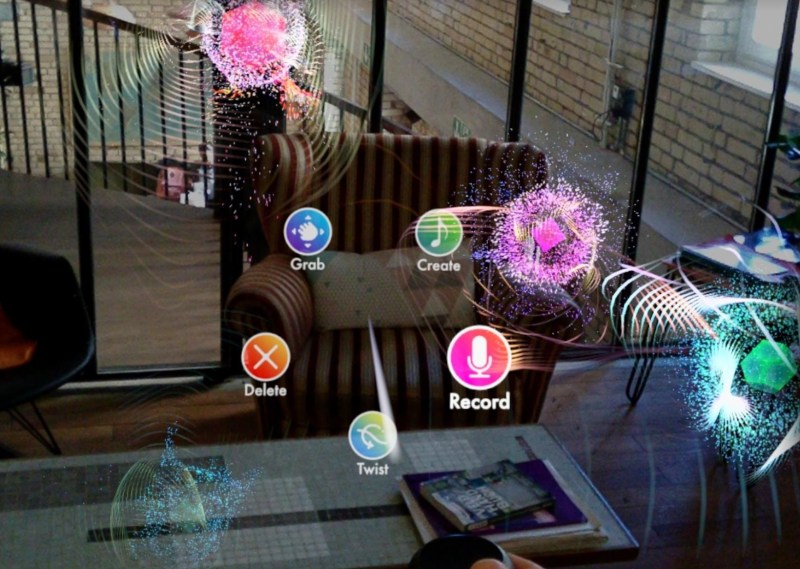
Above: Sennheiser and Magic Leap One.
VentureBeat: Are there some details there? I assume you want two-way communication to be more important than one-way.
Abovitz: Oh, yes. Massively multi-person two-way. Everybody gets together for Thanksgiving once a year. Whole families get together in the same space sharing emotions, gaze, and body language. The ability to have that every day, anywhere you want, breaking down those physical boundaries, that’s what we’re talking about. Not just two-way. It’s volumetric. It’s co-presence. It’s any time, anywhere.
What’s interesting is the combination of data and compute together, and the ability to put in the privacy and other architectural elements within those networks. Some of these things have been around for decades, where we trust them to pass our personal data back and forth, and they’ve respected that. It’s a different class of people. Some of the older, more established institutions that have built trust with the consumer and the population are interesting players in this world. There’s intimate volumetric massive data that’s coming, and you want to work with trust. You want to work with new forms of trust around that data. We’re new, and we get to start what we’re doing with players that have established trust, versus doing something where you’re effectively new and unfamiliar.
VentureBeat: So, it’s the opposite of heading toward a surveillance society where this is a part of that whole system of watching everyone.
Abovitz: You’re nailing something important. I believe there are multiple views of what this world looks like. What we call a Magicverse is our particular view that it should be a positive, decentralized, very person-friendly, community-friendly version of these postulations about a new society. There are other countries in other parts of the world that we won’t work with. They may have very dark, controlled views of what to do here.
There needs to be debate and discussion. People need to know what they’re signing up for, what’s happening here, and how they know they’re working with something that will be a force for good. We have to be very up-front, transparent, policy-based, and even architect and design away the possibility for corruption and misuse. That’s not an easy task, so we’re publicly stating that that is what we’re doing and why we’re here.
There will be another side, other companies and maybe other countries that don’t go down that path. Just like there’s democracy and totalitarianism, there will be these different forms. We want to at least have the media world saying that there are different forms. There are different societies to choose from, and people need to be aware of that. The technology does not mean it goes dark. The way it’s used, the rules, the architectural design define that.

Above: Star Wars Project Porg comes to Magic Leap One.
VentureBeat: Some people might look at this and say that it’s nice you’re thinking big, but can you also get me a product in my hands tomorrow? How do you balance that vision and practicality?
Abovitz: The short answer is, people can actually get a product in their hands tomorrow. We have people who are stitching together — we’re encouraging developers to build — you can already have multi-person interactions in spatial computing with Magic Leap One right now. The next six-to-nine months, you should spend time getting your basics right. If you want to develop or build for that world, you need to learn how to build at room scale. Get two people right. We’ll be putting out tools this spring and summer and fall and winter on a continuous basis that enable more capabilities.
Right now, we’ve put up so many tools that the average developer working is tapped into maybe 10 or 20 percent of the capabilities. Some of our flagship developers, like Greg Broadmore at Weta, they’re using a lot. Lucasfilm used a lot. With things they do, they interact with IoT, and you can have all kinds of amazing things happening. Some developers are still at Hello World and a ball bouncing on a table. Others are almost feature film-level amazing things they’re doing. We keep putting more and more tools, and we’ll continue to do so. All of that is with the thought of giving you the skill set as a developer to become a Magicverse developer.
When we announce partnerships happening in this city or this country, that will be a massive call for developer energy, for the volume of software and coding and experiences that need to be built. Omar has this metaphor of, if you were in a satellite orbiting the earth, as these cities and countries come online, it’ll be like watching the world light up. You’ll begin to see Magicverse entities light up and get connected.
If you had that vision right now, you’d be looking at California, and there’s a teenager on the block in a garage working with an ML1 building something. But we’ve already seen teams forming in 10 different cities, all working together as avatars to build stuff, very quickly. We’re seeing all that happening. We keep feeding those tools. By sharing the tools and the vision with them, they’re becoming the builders.
If you want to compare to colonizing Mars, the first settlers are showing up, and they need to get the 3D printers and the energy sources and start creating the greenhouses so that others can arrive. That’s what our first developer community is like right now. They’re the pioneers building that first infrastructure, creating the toolset to colonize the Magicverse. A year from now, it’ll be really intense.
By the end of this year, we’ll have announced a number of partnerships, including the one next week and all of those will be big hungry vessels for the creative energy of developers. A lot of everyday consumers will want what these developers will build. You may visit Magicverse and dip your toe in the water, but you’re only going to become a colonist if, one, value is delivered but also if trust is built and maintained.
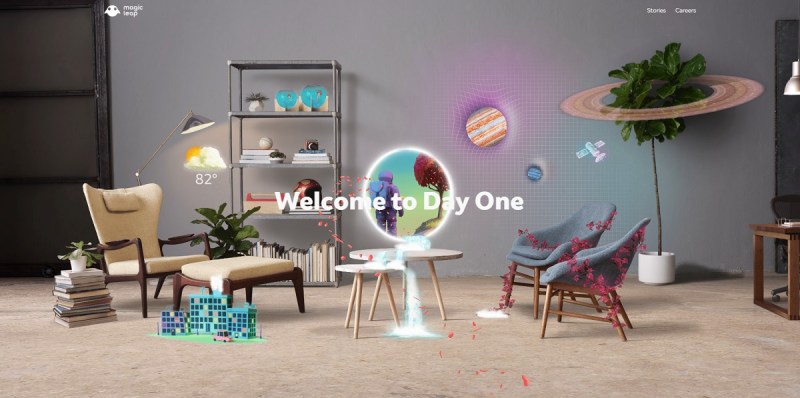
Above: Magic Leap is turning on the lights on its creations for AR.
VentureBeat: There’s going to be a lot of interesting conversations in Barcelona for you, it sounds like.
Abovitz: The group we’re announcing next week has the qualities of a place that will build Magicverse fairly quickly. It’s a population that seems geared up for that. There’s more of those coming. In front of that announcement, it’s important to state what we’re about more clearly and why. We’ll continue to do that. We just have to say it over and over again, expound and bring other folks into that discussion. It requires a lot of openness and engagement.
VentureBeat: Does that suggest that you see this coming up in a spatial way very regionally at first? And then, it all gets connected later? If you had something like, say, Singapore really likes this idea, they could bring their whole region up into the Magicverse. Is that the kind of opportunity you see?
Abovitz: I’m not only a big believer, but what we practically see is that you’ll have city-scale Magicverses appearing. Within a city, it’ll be first districts and regions, and then, the whole city. Then, cities will be connected. You’ll have all these modern cities connecting into a whole surface. In the next two-to-five years, it’ll be a number of states in the United States lining up, as well as parts of Europe and parts of Asia. Then, they’ll want to interconnect. Within that city, you’ll have amazing things, but as cities interconnect, you’ll have even more incredible things.
To some extent, you’ll have a sort of Kansas to Oz gradient. We’ll have to figure out — if you live in Kansas, outside of Oz, how do you spread some of that? The 5G infrastructures are very city-oriented. The whole technology base is about what you can lay into a modern city with super high speed and edge computing. It’ll act as a function to draw more people into urban centers, maybe more than any other function to date. But they’ll figure out ways to move out the technology into other parts of the country as well.

